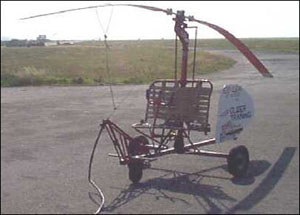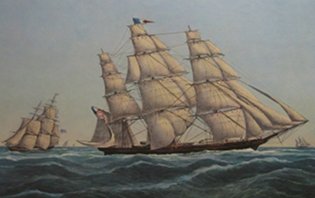 There have been a couple of aviation stories in the news recently. Here's a quick update.
There have been a couple of aviation stories in the news recently. Here's a quick update.
Pic: Doc's lifelong dream of flight begins to take shape
As noted in The F-35 Debacle, perhaps the goofiest weapon of war the United States armed forces has ever commissioned was the fastest, sleekest, most modern fighter jet in history — while requiring that it also have the capabilities of a helicopter.
The mind reels.
But, even though they now cost about 10 times the original estimate, this isn't to say that our money's not being put to good use. Sure, there are bound to be a few little glitches, but that's expected when developing a new breed of aircraft.
Little glitches like, say, turning into a fireball of death when hit by lightning.
Lightning will ground F35 fighter jet known as the Lightning II
The production of the F-35 Joint Strike Fighter – the world’s most sophisticated and expensive combat aircraft – has been derailed after engineers discovered that the jet’s fuel tank could explode if struck by lightning.
But at least they're watching every dollar and not frivolously wasting it on unnecessary weight:
Attempts to increase fuel efficiency by reducing the jet’s weight have also made it more vulnerable to enemy attack than the generation of aircraft it was supposed to replace.
Or scaring innocent civilians on the ground by flying too low:
A design fault in the fuel tank has also prevented the JSF being able to rapidly descend to low altitude.
What's so sobering is that, after more than a decade, this thing's still in the developmental stage. It hasn't even been put to use and field-tested yet.
Let's hope the bad guys don't live in an area protected by lots of thunderstorms.
Speaking of fireballs of death, below the fold we'll get an update on the Boeing 787 and how our ever-vigilant MSM has handled the story.
You won't be surprised.
In 1971, what many considered to be the most advanced airliner of its day, the McDonnell Douglas DC-10, took to the skies.
A few years later, an engine on a DC-10 fell off due to shoddy maintenance on American Airlines' part, killing all 271 people on board. The news media went nuts, claiming the DC-10 was a "death trap" and doing so much damage to future DC-10 sales and the reputation of the company that it eventually folded. The whole story is portrayed in Michael Crichton's superb novel, Airframe.
I was reminded of this recently when the media started going nuts over a few mishaps with the new Boeing 787. Some were even asking the question...
Boeing 787: The biggest lemon in history?
Actually, that would be the F-35, but we'll overlook that for now.
The recent worries over the safety and soundness of Boeing's new 787 aircraft appear vastly overblown. The unfortunate series of technical glitches that occurred this week are not only minor in nature, but are also cheap to fix—that is, if any system-wide repair is even necessary.
While a fire on board an aircraft and a leaky fuel system are concerning— especially given how sensitive the public can be about mechanical issues on an aircraft—the way the incidents have been portrayed have set off an unnecessary panic in general and among investors. For example, preliminary reports by the National Transportation Safety Board (NTSB) indicate that the fire broke out in one of the aircraft's two lithium-ion batteries, which are only engaged when the plane is on the ground and never in flight. The fire was small, creeping only two feet from its source, making it far from the raging inferno of people's nightmares.
The auxiliary battery may have overheated due to faulty wiring causing it to overheat. United Air Lines, the only US carrier to fly the new aircraft, reported that the wiring to lithium-ion batteries on one of its six brand new 787s was done improperly. If this turns out to be the root cause of the fire, then it would be a quick and cheap fix.
That "on the ground" line is somewhat telling, in that the MSM seemed to have accidentally overlooked that little detail in their recent 'fireball of death' stories.
The 787 Dreamliner is actually a pretty cool aircraft. I was lucky enough to ride in one on the Miami-Houston leg of my Christmas journey to CA. The thing just leapt off the runway, because its composite material makes it lighter than aluminum aircraft. Twice along the way the captain warned us to expect some turbulence, but nary a ripple was felt. The TV built into the back of the front headrest had 50 live stations for viewing.
I, however, was defying all convention by re-reading Airframe, a novel about a horrific airliner disaster. I told the person sitting next to me it was a case of, "If you can't beat 'em, join 'em."
I have a handful of aviation-related videos here.


 There have been a couple of aviation stories in the news recently. Here's a quick update.
There have been a couple of aviation stories in the news recently. Here's a quick update.